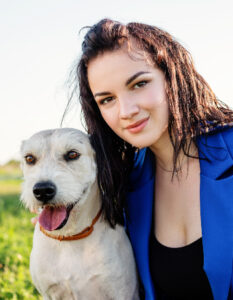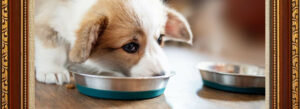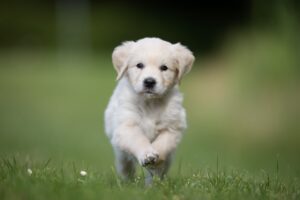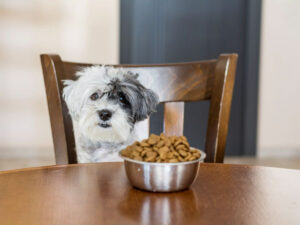Welcoming a new puppy into your home is akin to opening a new chapter filled with long walks in the park, cosy cuddles on the couch, and the promise of a loyal companion for years to come.
However, amidst all the joy and excitement, there’s one aspect of puppyhood that can be a tad less glamorous: toilet training. Fear not!
In this comprehensive guide, we’re about to embark on a journey through the art of toilet training your puppy, step by step.
Table of Contents
ToggleUnderstanding the Importance of Toilet Training
Toilet training, often affectionately referred to as housebreaking, stands as a pivotal milestone in your puppy’s development. Beyond keeping your carpets and floors pristine, it serves as the cornerstone for instilling good habits in your furry friend.
By imparting the knowledge of where and when to conduct their business, you’re laying the foundation for a well-behaved and contented companion.
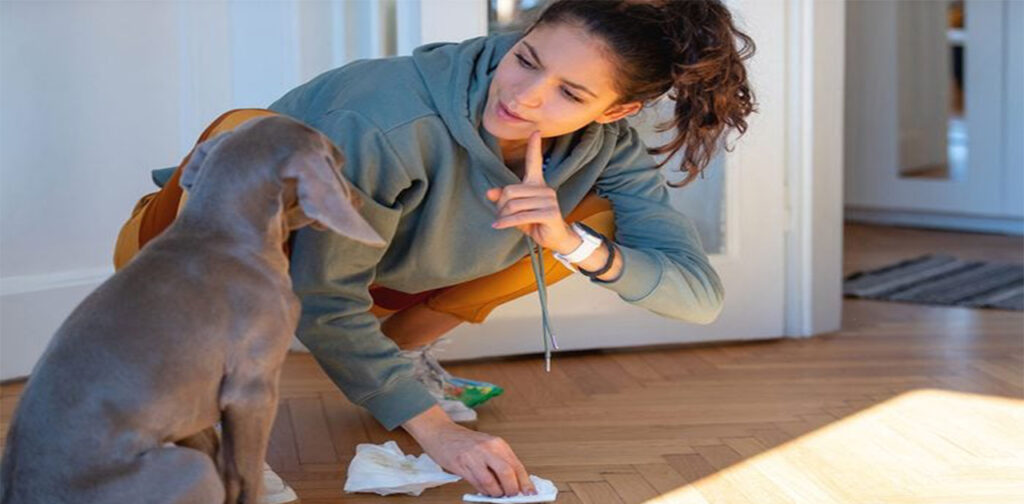
Benefits of Early Puppy Toilet Training
Embarking on toilet training during your puppy’s formative months bestows a cornucopia of advantages. First and foremost, it significantly reduces the likelihood of messy indoor accidents that can test the patience of even the most understanding pet parent.
Moreover, early training nurtures a profound bond between you and your puppy, based on mutual trust and communication. It’s a crucial step in ensuring your puppy blossoms into a well-adjusted adult dog, equipped with the discipline and etiquette required to thrive in a human-centric world.
Setting Realistic Expectations
Before embarking on the training odyssey, it’s imperative to establish realistic expectations. Puppies, in many ways, are like human infants; they’re still acquainting themselves with the intricacies of the world around them. Patience and consistency will emerge as your most trusted allies throughout this journey.
Expect a few bumps along the way, but with dedication and unwavering support, success is inevitable.
Preparing for Puppy Toilet Training
1. Gathering Essential Supplies
Your journey into toilet training begins with gathering the necessary supplies, each designed to facilitate the process:
- Crate: A properly sized crate serves as a secure sanctuary for your puppy, akin to their cosy den.
- Puppy Pads or Newspaper: These humble items become invaluable tools for indoor training, providing designated spots for your puppy to relieve themselves.
- Cleaning Supplies: Enzymatic cleaners are your secret weapon against odours and stubborn stains, ensuring your home remains fresh and clean.
- Treats: High-value treats act as positive reinforcement rewards, motivating your puppy to embrace desirable behaviour.
- Leash and Collar: Essential for outdoor training sessions, these tools are your means of ensuring control and safety during walks and potty breaks.
2. Designating a Toilet Area
Next, select a specific spot in your yard or near your home as your puppy’s designated toilet area. Consistency in location is key; it helps your puppy understand precisely where they should conduct their business. This designated space serves as a crucial reference point for your furry companion.
3. Creating a Puppy-Friendly Environment
Puppies, much like explorers, possess an insatiable curiosity that often leads them into unforeseen adventures. To ensure a safe and conducive environment for training, you must embark on a little puppy-proofing.
Remove hazards such as loose cables, fragile decorations, and any potentially toxic substances from their reach. By securing your home, you pave the way for a successful training journey.
The Science Behind Puppy Toilet Training
1. Canine Instincts and Toilet Behavior
Understanding the science behind puppy toilet training is akin to deciphering the secret language of your furry friend. Puppies, by nature, possess an innate desire to maintain their living space’s cleanliness. This instinctual trait makes them highly receptive to the art of training.
They don’t wish to soil their den, and by utilizing this knowledge, you can guide them toward appropriate bathroom behaviour.
2. Recognizing Signs Your Puppy Needs to Go
Puppies are excellent communicators, albeit in their unique way. They offer subtle signs when they need a bathroom break. Watch for cues such as sniffing around, circling a particular area, or emitting a soft whine. These indicators are your puppy’s way of saying, “It’s time!” Paying close attention to these cues can significantly reduce the occurrence of indoor accidents.
Establishing a Toilet Training Schedule
1. The Importance of Consistency
Consistency serves as the keystone of successful toilet training. Your puppy thrives on routine, and establishing a consistent schedule for feeding, playtime, and bathroom breaks is paramount. Predictability imparts a sense of security to your puppy and streamlines the learning process.
2. Designing a Feeding Schedule
A regular feeding schedule harmonizes beautifully with a consistent elimination routine. Feed your puppy at specific times each day and avoid leaving food out for them to nibble on at their leisure. This structured approach not only aids in controlling when your puppy needs to go but also simplifies the training process.
3. Timing Toilet Breaks
Understanding when your puppy is most likely to need a bathroom break is an invaluable skill. Puppies often need to relieve themselves:
- After Waking Up: Just like us, puppies tend to start their day with a trip to the bathroom.
- After Eating: Food stimulates digestion, and post-meal potty breaks are common.
- After Playtime: Excitement can trigger the need for a bathroom visit.
- Before Bedtime: A final bathroom break before sleep minimizes nighttime interruptions.
- During the Night (for Young Puppies): Young puppies have smaller bladders and may need nighttime outings.
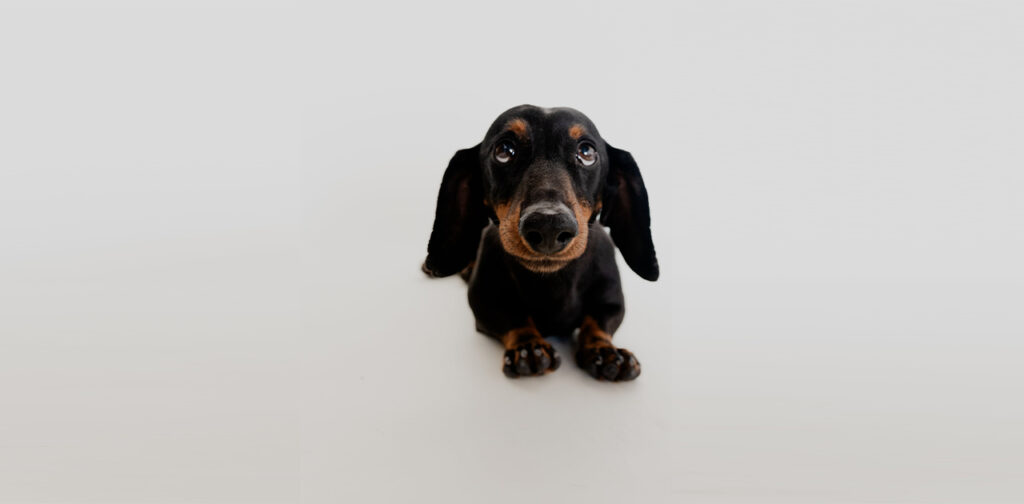
Positive Reinforcement Techniques
1. Reward-Based Training Methods
Positive reinforcement is the golden thread that weaves the fabric of successful puppy training. It involves rewarding your puppy for exhibiting desirable behaviours. Praise, treats, and affection become your tools of motivation, encouraging your puppy to consistently repeat actions that earn them these rewards.
2. Using Verbal Cues and Commands
Teaching your puppy verbal cues and commands is akin to granting them a dictionary for their thoughts and intentions. Phrases like “go potty” or “outside” become verbal cues that help your puppy associate specific actions with words.
By using these cues consistently during training, you’re fostering a shared language that strengthens your communication.
3. Avoiding Punishments
In the world of puppy training, positivity reigns supreme. Avoid the temptation to scold or punish your puppy for accidents or undesirable behaviour. Instead, focus on the power of positive reinforcement. Encouragement and rewards build trust and nurture a positive training environment where your puppy feels safe to learn and grow.
Handling Accidents and Mistakes
1. Cleaning Up After Accidents
Accidents are an inevitable part of the learning process when toilet training your puppy. It’s crucial to approach these incidents with patience and understanding. When accidents occur, swift and thorough cleanup is key.
Enzymatic cleaners are your secret weapon in this endeavour. These specialized cleaners effectively break down the proteins in pet urine, eliminating not only the stain but also the odour that might otherwise attract your puppy back to the same spot.
By erasing all traces of the accident, you’re helping your puppy understand that indoors is not the designated bathroom area.
2. Remaining Patient and Persistent
Toilet training can test the patience of even the most composed pet parent. It’s important to remember that your puppy is still in the learning phase, and setbacks are entirely normal.
Frustration may occasionally set in, but it’s crucial to maintain your composure and remember that you’re guiding your furry friend toward a lifelong skill.
Stay persistent in your efforts, and your dedication will undoubtedly pay off in the end.
Gradual Transition to Outdoor Toileting
1. Shifting from Indoor to Outdoor Toilet Training
Once your puppy consistently uses the designated indoor toilet spot, it’s time to initiate the gradual shift towards outdoor toileting. This transition marks a significant step in your puppy’s development. To achieve this, follow these steps:
- Choose an Outdoor Spot: Select an outdoor location, ideally near your designated indoor area. This familiarity helps your puppy associate the two spaces.
- Supervision is Key: When transitioning to outdoor training, close supervision is essential. Keep a close eye on your puppy’s behaviour, particularly after meals, playtime, or naps. When you notice signs that they need to go, such as sniffing or circling, immediately guide them to the outdoor spot.
- Use Verbal Cues: Continue using the verbal cues you introduced during indoor training, such as “go potty” or “outside.” These cues help your puppy understand the desired action.
2. Encouraging Outdoor Elimination
Taking your puppy outside frequently is pivotal in encouraging outdoor elimination. Regular outdoor trips reduce the likelihood of accidents indoors. When your puppy successfully eliminates outside, lavish them with praise and rewards.
The positive reinforcement serves as a powerful signal that they’ve done the right thing. This reinforces the notion that the outdoors is indeed the preferred place for relieving themselves.
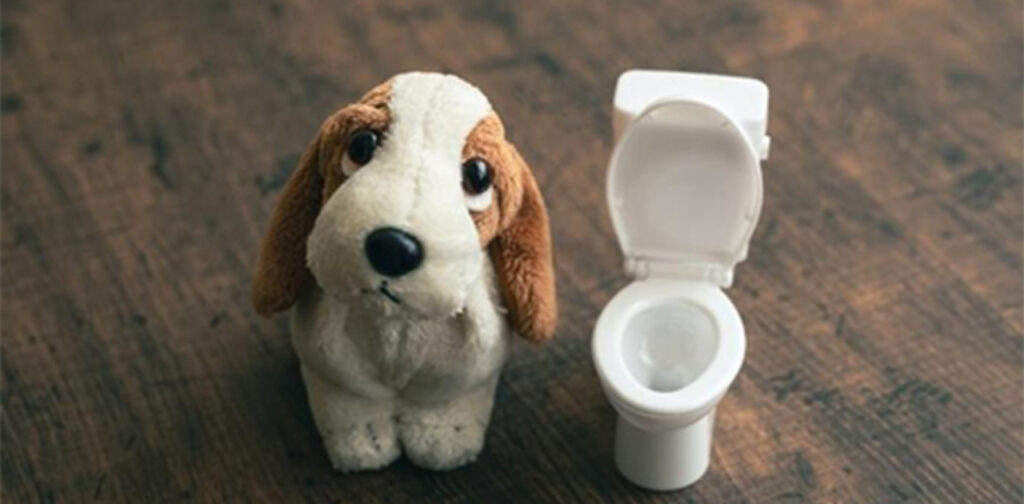
Monitoring and Adapting
1. Recognizing Progress
As you navigate the toilet training journey with your puppy, it’s essential to celebrate every success, no matter how small. Positive reinforcement for good behaviour not only fosters a stronger bond but also bolsters your puppy’s confidence.
These celebrations of progress are stepping stones toward a well-trained and confident companion.
2. Adjusting the Training Approach
Every puppy is a unique individual, each with their distinct needs and quirks. Therefore, it’s paramount to remain flexible in your training approach. Be prepared to adapt your methods to suit your puppy’s individual personality and learning style.
Some puppies may respond better to treats, while others thrive on praise and affection. By tailoring your training approach to your puppy’s preferences, you’ll achieve more effective results.
3. Troubleshooting Common Challenges
Occasionally, you may encounter challenges in your toilet training journey. Stubbornness, reluctance to go outside, or persistent accidents can test your resolve. In such instances, don’t hesitate to seek the guidance and support of a professional dog trainer.
These experts possess the knowledge and experience to address specific challenges and provide you with invaluable insights and strategies to overcome them.
Conclusion
As you navigate the rewarding yet occasionally challenging process of toilet training your puppy, remember that patience, consistency, and positive reinforcement are your most dependable allies. Celebrate every milestone, no matter how small, and take pride in the progress you and your puppy make together.
Soon, you’ll find yourself in the company of a well-trained, happy, and contented companion, ready to embark on a lifetime of adventures by your side.

